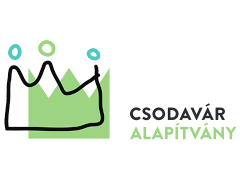Introduction
The educational landscape of the 21st century is constantly evolving and expanding. Teaching-learning processes are emphasised in education and development. Teachers’ toolboxes are expanding to include more and more technical and digital tools. Information and communication technologies offer a range of new opportunities for professionals. Today’s generation is naturally drawn to the use of technological tools. Let’s capitalise on this interest!
Include innovative technological tools in our developments to make our activities more attractive and varied for children.
Educational floor robots are the tools that can achieve this goal.
These robots will be involved in the development of robot-assisted therapies. Certain types of tasks are solved with the help of the device, creating a new alternative for the child to develop as effectively as possible.
Who is it for?
With our handbook, we help teachers get started with floor robots from the basics. Our guide is aimed at professionals who are just getting to know this tool. We would like to stimulate the interest of as many professionals as possible in therapies with this device. We hope that with our help more and more people will get to know and like floor robots. Our aim is to help you plan and implement improvements with the device. In this way, we will help to promote the spread of robot-assisted therapies.
Our handbook is primarily intended for special education teachers, developmental teachers, kindergarten teachers and teachers who work with children aged 3 to 10 with special educational needs and typically developing pupils.
Our aim is to give professionals the opportunity to organise their work and development in a more interesting and varied way, to motivate children, to keep their attention for as long as possible, and to make their development as effective as possible. We hope that with our guidance, and with the help of the Robooks site, more and more teachers will create their own activities and enjoy the joy of creating.
Contents
- Who is it for?
- Skills development
- Floor robots in the education of children with SEN
- General pedagogical and methodological principles
- The principle of personalisation – or taking account of individual specificities
- The principle of diversity
- Principle of gradualness
- Active learning or the use of activity-based methods
- What skills can we use floor robots to develop?
- What kind of teacher training is required to use floor robots?
- Technical conditions
- Technical guide
- Learning to operate a robot
- Designing the structure of content
- Types of floor robot toys
- The auxiliary materials
- The images
- The track



